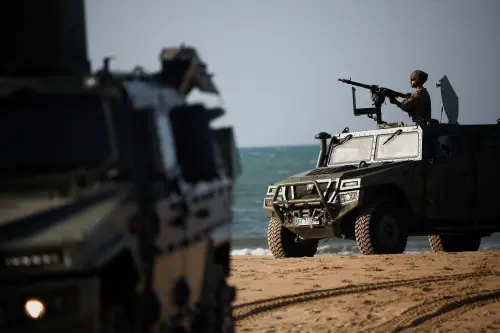When do state investments in arms factories or the wages of tank crews and pilots not count as defense spending? The answer lies in the existing EU rules. Until recently, the bloc adhered to a narrow definition of spending on defense hardware.
The EU is now exploring ways to allocate hundreds of billions of euros to enhance military readiness, prompted by the need to confront threats from Russia and concerns regarding U.S. commitment to European security. This redefinition of what constitutes defense spending grants the region's 27 national governments a four-year reprieve from EU deficit caps, enabling greater defense allocations.
This spending, amounting to approximately 1.5% of Europe's total economy annually, aims to address decades of underinvestment in security. However, approval hinges on a collective consensus regarding the definition of defense spending.
Previously, the construction of an ammunition plant was categorized as construction rather than defense, which Poland found when it moved forward with a 5 billion zloty ($1.3 billion) factory. The previous narrow definition allowed EU governments to apply it only to hardware that had already been delivered—tanks, planes, guns—excluding costs related to training, hiring, and compensating new tank crews, pilots, and mechanics.
The EU's updated definition broadens the category to include most items pertinent to defense, encompassing so-called "dual-use" goods applicable to both military and civilian purposes. This covers enhancements like stronger roads and bridges for tank movement, as well as the production of drones, helicopters, satellites, radars, and underground shelters.
This expanded definition aligns more closely with NATO's classification of defense spending, which targets a goal of 2% of GDP. However, it still leaves ample room for interpretation by individual governments.
"Discussions have already been extensive, and now we see specific member states proposing their own ideas on what should be included as defense," noted a senior EU official.
Italy, despite having no borders with Russia, wants to broaden the definition to encompass expenditures related to managing migration from Northern Africa—an approach likely to be rejected, according to EU officials. They assert that border protection can be classified as "defense" only when it pertains to military installations designed to thwart invasions, rather than routine border patrols aimed at intercepting migrant boats.
Spain has similarly requested the inclusion of climate change initiatives in the defense category, a proposal the Commission has also dismissed.
While general cybersecurity measures are unlikely to feature on the defense list, EU officials indicated that military purchases of computers to thwart cyberattacks would qualify.
"The key is that it must be relevant to defense," a second senior EU official explained.
